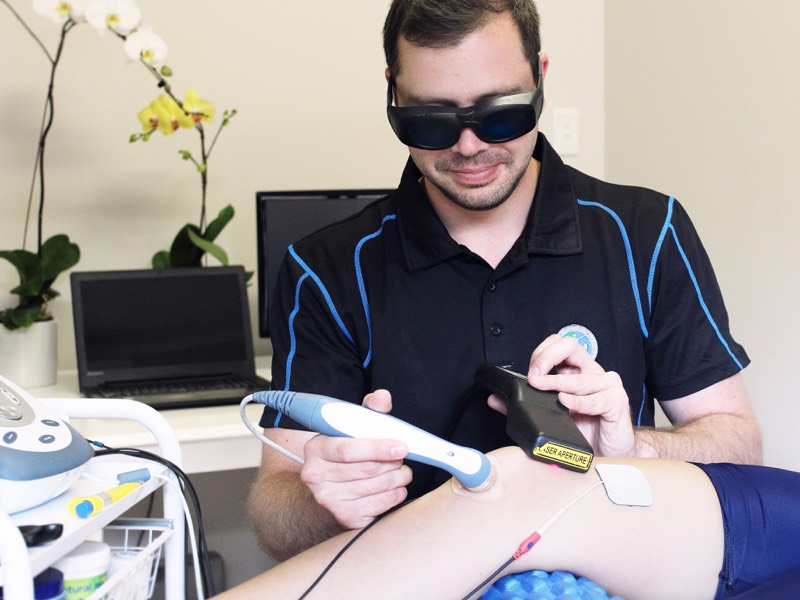Laser therapy sounds like a serious type of treatment. However, it really isn’t something you should worry about at all. It assists with pain relief and stimulates healing in your own tissue. And most of the time you won’t even feel anything when it is applied. This article will explain to you exactly what you can expect from laser treatment.
When you think of laser, you might think of laser hair removal or laser eye surgery or maybe you’ve seen someone shine a laser pointer on a screen. But have you ever heard of laser being used as a treatment by physiotherapists? There are two types of laser, one being high powered lasers, which are used in commercial industry and engineering settings. However, physiotherapists use the type of laser that is called “Low Level Laser Therapy” and this type is very safe and painless to use on your skin and tissues.
What exactly is Laser?
The term LASER is the acronym for: Light Amplification by Stimulated Emission of Radiation. Basically, laser is a type of light and it has very specific qualities namely: it is monochromatic, collimated, and coherent. A laser is a device that produces such light.
Now, that’s a mouthful. Let’s simplify these concepts. Light consists of waves, the same as sound waves. The light waves coming from a laser, has very specific qualities. It needs to be light waves of exactly the same colour, frequency and wavelength. And the waves move precisely parallel to each other. This creates a very concentrated, precise beam of light. Light coming from a laser, is created by a specific process within the laser device to cause the controlled emission of radiation.
Why we use laser
Your skin is the organ that is naturally exposed to light more than any other organ in your body. It responds in different ways to different types of lightwaves. For example: infrared wavelengths cause warmth in your skin and ultraviolet (UV) wavelengths cause a change in skin color. Laser light also gets absorbed through your skin and it affects the function of your connective tissue cells (fibroblasts), accelerate connective tissue repair and act to decrease inflammation.
So, laser therapy is a non-invasive light source treatment that emits no sound or vibration and very little to no heat. It has been shown to promote healing in your own tissue and that is why it is used by physiotherapists to treat various musculoskeletal conditions.
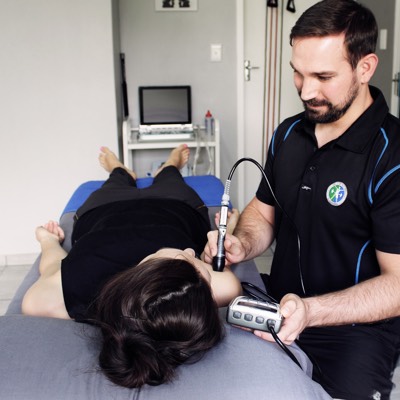
Healing Effects of Laser
- Eases pain
- Reduces inflammation
- Decreases swelling
- Increases blood flow
- Increases cellular metabolism
- Improves blood supply to injured tissue
- Breaks down scar tissue and adhesions
- Increases tissue flexibility
- Decreases muscle spasm
- Increases cell regeneration
“One of the most powerful machines to accelerate tissue healing”
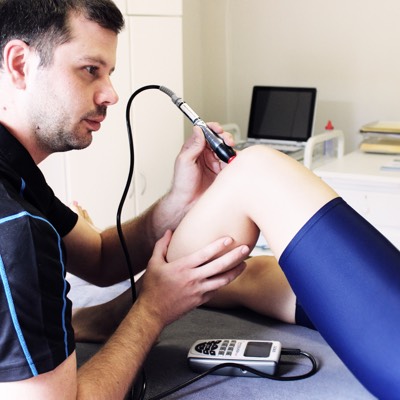
Laser treatment
Physiotherapists use laser therapy as part of their treatment, in conjunction with other treatment techniques. The aim of your treatment should not only be pain relief, it should look at the root of the problem and how you can improve as a whole. And that is why you shouldn’t expect to get laser treatment in isolation. The laser treatment itself tend to last anywhere between 2 and 10 minutes, depending on the size and depth of the structure being treated. This time will be incorporated into the overall time of your treatment session.
Our physiotherapists are qualified to provide low level laser therapy (LLLT). They will be able to adequately determine if laser treatment will benefit you and effectively incorporate into your treatment plan. Mostly, it is used on structures like ligaments, tendons and joints that is made up of much more collagen. But, it can also be applied on all kinds of musculoskeletal injuries to help reduce pain, inflammation and encourage cell reproduction.
Different types of application
Lasers with an output power of less than 0.5 Watts are classified as LLLT (low level laser therapy), whereas lasers with an output power of more than 0.5 Watts are classified as HPLT (high power laser therapy).
- HPLT creates heat on the surface of the skin due to their higher power density and these lasers are used in the laser medicine field to cut or destroy tissue (e.g., eye surgery)
- LLLT is often referred to as “cold lasers” since they do not create a heating sensation during treatment. This is the type of laser therapy that is used by physiotherapists.
Lasers with wavelengths between 660 nm and 905 nm have the ability to penetrate skin, and soft/hard tissues. This light has a good effect on pain, inflammation and tissue repair. Administering LLLT below this dose range has been shown to not be effective.
What changes in the bigger physiological picture
When the laser is placed against your skin, the light penetrates it and travels several centimetres. It gets absorbed by the mitochondria in each cell (this is the part of the cell that creates energy). The energy fuels many positive physiological responses resulting in restoration of normal cell function but at enhanced rate.
The effect is photochemical not thermal, meaning it doesn’t have a heating effect in your tissues (thus, the name cold laser). The light triggers biochemical changes within your cells and can be compared to the process of photosynthesis in plants, where sunlight is absorbed by plant cells and it triggers a chemical reaction within the plant.
Now, zoom in on the cellular changes:
The primary effects of LLLT are brought about by a photochemical processes in your cells’ mitochondria. Low level laser light reduces oxidative stress in the tissue while increasing ATP synthesis. Here, the monochromatic red and infrared beams are absorbed by components of the respiratory chain. This enhances the electrochemical potential of protons, ATP, RNA, and protein synthesis. It also increases oxygen consumption, the membrane potential, and the synthesis of NADH.
Through this process it affects the function of connective tissue cells (fibroblasts), which accelerates connective tissue (collagen) repair and acts to decrease inflammation.
Laser therapy feels like:
Even though laser therapy has a big effect on stimulating changes in your cells, you might not feel an immediate physical effect. But you can rest assured that it improves and accelerates the overall healing response in your tissues. At most, laser treatment can sometimes cause a slight stinging feeling, but in most cases, you’ll feel no pain and no heat.
Your physiotherapist will ask you to expose the area of your body that needs to be treated and if it is close to your face or eyes, you might be asked to wear protective goggles. You’ll feel only the pressure of the applicator on your skin as it doesn’t vibrate or make a sound. Your physiotherapist might apply it to one spot only, or a few spots, depending on your problem.
How long does Laser treatment take?
Treatment times per point are usually between 30 seconds to a minute. As little as one point may be treated or as many as 10 to 15 points in larger areas.
However, laser light therapy will only be a part of your treatment session. Often, your physiotherapist will combine it with other treatment techniques that also enhance the overall healing response in your body. Techniques like joint mobilisations, massage or graded exercises used in combination with laser can lead to a bigger and more prolonged effect of treatment.
How many times should I get laser therapy?
You could feel the effect of the laser therapy after the first session, however it works best if it can be administered repeatedly for a few weeks. It can be used in each treatment session.
Your physiotherapist will discuss a treatment plan with you, we’ll give you an idea of how long it will take for your condition to improve and how often treatment is needed. Some cases we’ll need 6-10 sessions. Mostly we see you twice during your first month, and once a week for the next two weeks and then once every second week in the next month.
What can I do at home to ensure laser therapy is effective?
Unfortunately, the healing effect of laser treatment might only be temporary, if the real cause of your problem isn’t addressed. At Well Health Pro, your physiotherapist will look at the bigger picture and discuss the possible causes of your pain with you. With physiotherapy treatment, it is important to comply to the whole treatment plan, including rehabilitation and conditioning. This is the best way to get long-lasting pain relief. Looking back, you won’t be able to measure only the effect of the laser, but you’ll be able to see overall improvement in your condition.
Remember, you see your physiotherapist for an hour at a time. A big part of your improvement will take place in the hours you spend away from the physiotherapist. There are a few things you can do at home to make sure your laser treatment is effective:
- Do your prescribed home exercises and stretches
- Make sure you get good quality sleep and nutrition as this also helps with recovery
- If possible, avoid the use of anti-inflammatory medication, as it delays healing
- Discuss your use of medication with your physiotherapist
- Your physiotherapist will advise you on whether you should gym/exercise or not
- Apply heat / ice to help with pain
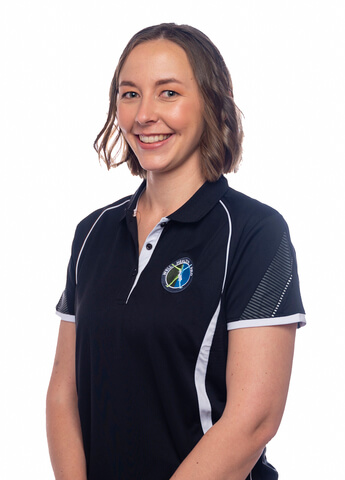
Cost of laser therapy
There are certain medical aid rates for laser therapy as a treatment, but they are always used as part of a complete treatment consultation. So, you will never be paying for only laser.
This treatment in isolation will not fix your problem. It’s the complete treatment package that shows the real improvement.
Medical Aid Code – 006
The laser treatment code 006 is used when used during your treatment. This is the code you will see on your statement and that will be sent in to your medical aid, stating that low light laser therapy (LLLT) was used during your treatment. Most good medical aids offer re-imbursement for laser therapy.
Does it make a difference to have an experienced physiotherapist apply laser therapy?
The experience and skill of your physio makes all the difference to identify and apply the laser accurately and with precision. This is not something you can do or copy form YouTube. You might risk making it even worse if you don’t consider how the different structures are interacting with each other.
Our physiotherapists have years of clinical experience and in depth knowledge of your body’s anatomy. They understand different painful conditions and injuries and will know exactly what laser dosage is suitable to help you heal quicker.
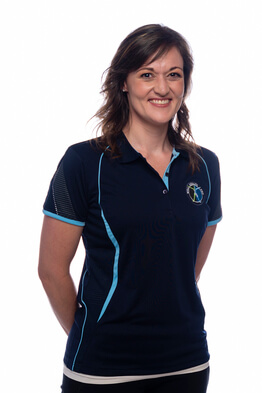
Conditions that respond well to Laser treatment
Contra-indications to laser therapy
Other laser treatment answers:
